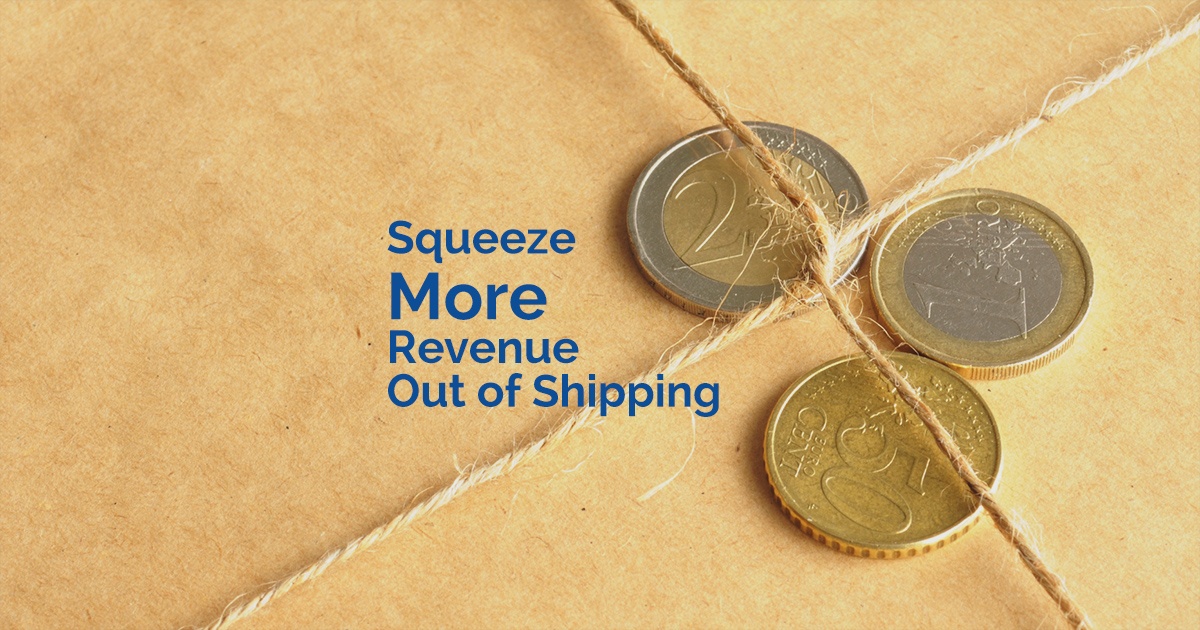How to Squeeze More Revenue Out of Shipping

It’s easier see how improvements in receiving allow more efficiency in the pick, pack, and ship process, which in turn shows up in the bottom line. But revenue from shipping...really?
Whereas best practices for upstream processes like receiving need to revolve around accuracy, optimizing downstream client-focused activities should revolve around flexibility and efficiency. That goes not only for storage and warehouse management, but also for seemingly straightforward activities like packing and shipping.
In fact, packing and shipping are often hidden cost centers—meaning that improvements here can effectively squeeze more revenue out of your operations. Here’s what you’ll need:
Tools for Efficient Packing
Packing an order for shipping requires materials with a cost: boxes, poly bags, packing material, tape, address labels, and so on. The cost of these items, as well as associated shipping costs, rises with the size and amount used. Hence, using smaller boxes, less packing material, and less tape makes the material cost per shipment slightly lower. Multiply that by a few thousand shipments a month, and the savings are far from negligible. The issue is that it’s not always clear what will work best, especially if multiple items are being packed in a single box.
What you’ll need: The best WMS and/or shipping software should make recommendations about the most efficient ways to pack orders—and find the lowest shipping rates for that package when you are done.
Good Planning and Labor Management
Never underestimate labor costs. During high shipping times, you need an appropriate number of workers to handle the increased number of orders, hopefully getting them all out on time and keeping your customers happy. On the other hand, having extra people around when the work does not necessitate it is very costly.
What you’ll need: Most shippers turn to temporary laborers to help with periods of high demand. Ideally, these workers need to be called in just before the spike in orders—and your floor manager needs to feel comfortable releasing them once the rush is over. A good labor management system, then, is key. One that employs management by exception can be especially useful in alerting the right managers when spikes in demand occur.
The Ability to Shop Carriers
Too often, smaller shippers get saddled with a single carrier for all their shipping. While this might be convenient, there is no carrier that provides the lowest rates and best service for every location and every product. So there are hidden efficiencies to be unearthed in choice of carrier as well.
Even a decade ago, the way larger shippers went about this was to have a single person on the phone (or surfing websites), trying to find the lowest rates and negotiating deals with multiple carriers. It took time, and even then results were rarely guaranteed…or even measured. Still, shopping multiple carriers is a necessity for getting the best rates and fastest ship times.
What you’ll need: Just as a smart software solution can quickly identify the most efficient ways to pack a shipment, software can find the most efficient shipping as well. The technology is not complicated. It simply needs the right integrations and the ability to handle real-time data.
In fact, the best solutions have ways of integrating the packing and shipping processes. They can recognize what services are needed (ground versus air, for example) without dictating which specific carrier must be used. Shippers simply indicate the geographic region shipping from and shipping to, and then specify either a “need on” date or a “deliver by” date. The software can then choose the optimal packaging and optimal carrier, ensuring safe and speedy delivery while minimizing cost.
Running the Numbers
Activities like packing and shipping really are a numbers game. There are many variables, the space of choices is huge, and there are benefits and drawbacks to every choice. These are exactly the kinds of complex problems computers excel at…so it makes sense to have them find those efficiencies, when possible. The end goal is to deliver items intact and in a timeframe that matches customer expectations, all while keeping costs at a minimum.
At Infoplus, we explicitly built our software with this end goal in mind. If you’d like to see a demonstration of its optimization and decision-making abilities, contact us. You’ll be surprised at how much money you can still squeeze out of your shipping processes.
.png?width=225&height=60&name=Logo%20(7).png)


